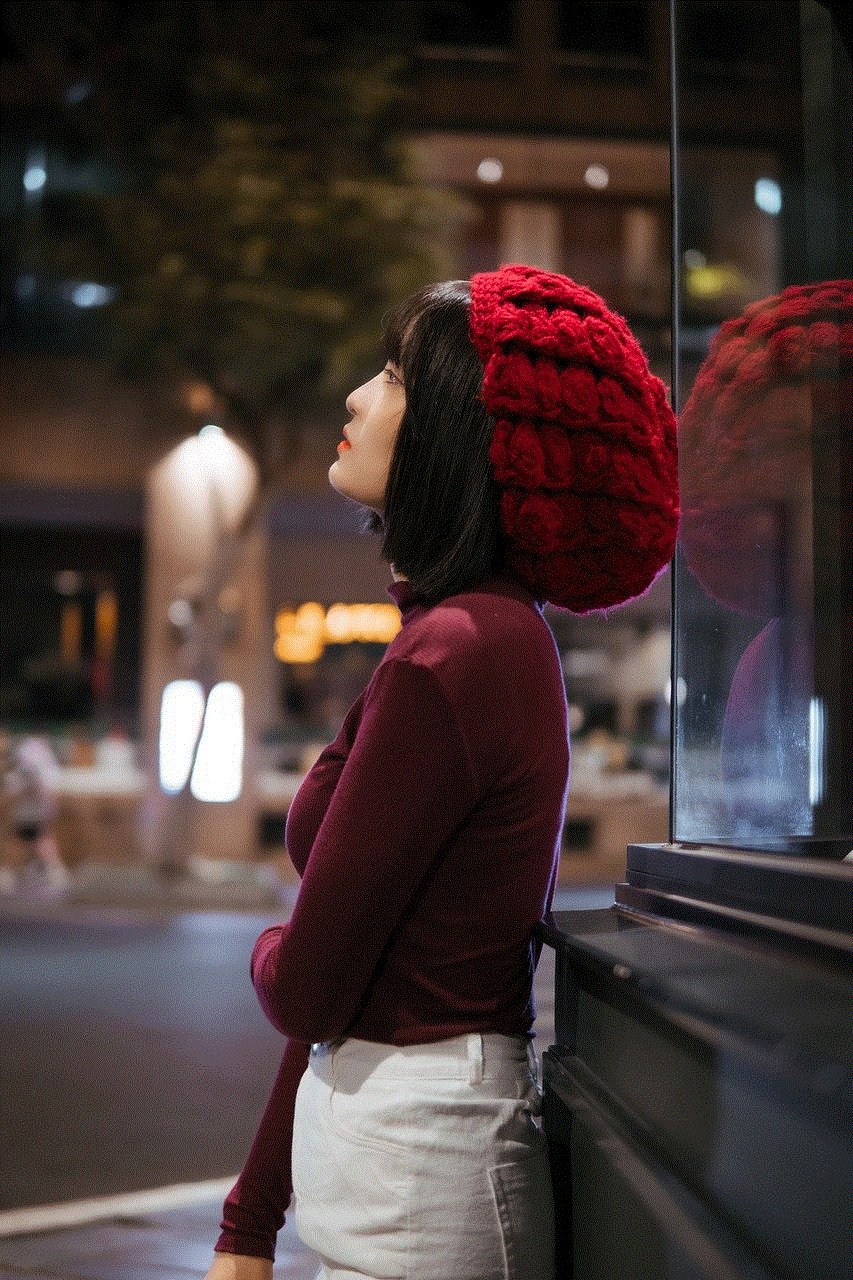how to share apps between iphone and ipad
In today’s technology-driven world, having multiple devices is quite common. With a wide range of devices available, it is no surprise that many people own both an iPhone and an iPad. These two devices, both manufactured by Apple, are known for their sleek design, user-friendly interface, and advanced features. One of the advantages of owning both an iPhone and an iPad is the ability to seamlessly share apps between the two devices. In this article, we will explore the various ways to share apps between an iPhone and an iPad, and how to make the most of this feature.
But before we dive into the methods of sharing apps, let’s understand the concept of app sharing. App sharing is a process of transferring an application from one device to another, either wirelessly or through a wired connection. This allows users to have the same apps on multiple devices, without having to download them separately. This can be beneficial for users who prefer to use different devices for different purposes or for those who want to access their favorite apps from any of their devices. Now, let’s take a look at the different ways to share apps between an iPhone and an iPad.
1. Using iCloud
The first and most convenient method to share apps between an iPhone and an iPad is by using iCloud. iCloud is a cloud storage and synchronization service provided by Apple. It allows users to store their data, including apps, on remote servers and access it from any of their Apple devices. To share apps using iCloud, follow these steps:
Step 1: Make sure that both your iPhone and iPad are connected to the same iCloud account.
Step 2: On your iPhone, go to the App Store and find the app you want to share.
Step 3: Tap on the “Get” or “Download” button to download the app.
Step 4: Once the app is downloaded, it will automatically appear on your iPad.
Step 5: You can also enable the automatic downloads feature on your iPad to ensure that any app you download on your iPhone gets automatically downloaded on your iPad as well.
2. Using Family Sharing
Another way to share apps between an iPhone and an iPad is by using Apple’s Family Sharing feature. This feature allows up to six family members to share apps, music, movies, and more. To set up Family Sharing, follow these steps:
Step 1: Go to “Settings” on your iPhone.
Step 2: Tap on your name at the top of the screen.
Step 3: Select “Set Up Family Sharing” and follow the instructions to invite members to your family group.
Step 4: Once set up, any app that you download on your iPhone will be available for download on your iPad as well.
Note: Family Sharing only works for apps that are eligible for sharing. Some apps may not be available for sharing due to licensing restrictions.
3. Using the App Store
The App Store also offers a feature to share apps between an iPhone and an iPad. This method is useful if you are not using iCloud or Family Sharing. To share apps using the App Store, follow these steps:
Step 1: On your iPhone, open the App Store and go to the “Updates” section.
Step 2: Tap on the “Purchased” tab at the top of the screen.
Step 3: Locate the app you want to share and tap on the “Cloud” icon next to it.
Step 4: The app will start downloading on your iPad.
Note: This method only works for apps that you have previously downloaded on your iPhone.
4. Using iTunes
iTunes is another way to share apps between an iPhone and an iPad. This method is useful for users who prefer to manage their apps through their computer . To share apps using iTunes, follow these steps:
Step 1: Connect your iPhone to your computer using a USB cable.
Step 2: Open iTunes on your computer and select your iPhone from the list of devices.
Step 3: Go to the “Apps” tab and scroll down to the “File Sharing” section.



Step 4: Select the app you want to share and click on “Save to.”
Step 5: Choose a location on your computer to save the app.
Step 6: Connect your iPad to your computer and repeat the same steps to transfer the app from your computer to your iPad.
5. Using A Third-Party App
Apart from the aforementioned methods, there are several third-party apps that can help you share apps between an iPhone and an iPad. These apps use wireless technology to transfer apps between devices. Some popular third-party apps include SHAREit, Xender, and AirDrop. These apps are easy to use and offer fast transfer speeds. However, they may not work for all apps, and some may require a subscription fee.
In conclusion, sharing apps between an iPhone and an iPad is a convenient and efficient way to have the same apps on both devices. Whether you prefer to use iCloud, Family Sharing, the App Store, iTunes, or a third-party app, there are plenty of options available for you to choose from. By following any of the above-mentioned methods, you can easily share your favorite apps between your iPhone and iPad and enjoy a seamless experience across both devices.
anonymous media yik yak exposed users
Yik Yak, the anonymous social media app that gained popularity in the early 2010s, has been the subject of controversy since its inception. The app allows users to post anonymous messages, or “yaks”, that can be viewed by others within a certain radius. While many users have enjoyed the freedom of anonymity, others have used the app to bully, harass, and spread hate speech. In recent years, there have been numerous instances of Yik Yak users being exposed and facing consequences for their actions. This has raised questions about the ethics and safety of anonymous social media platforms, and has sparked a debate about the responsibility of these companies in protecting their users.
The rise of Yik Yak began in 2013 when two college students, Tyler Droll and Brooks Buffington, launched the app on their campus at Furman University. The app quickly gained popularity among college students, with its easy-to-use interface and promise of anonymity. Yik Yak was marketed as a platform for “spontaneous, hyper-local conversations” and was initially intended for use on college campuses. However, as the app gained traction, it expanded to other locations and demographics.
One of the main draws of Yik Yak was its anonymity feature. Users did not have to provide any personal information or create an account to use the app. This made it easy for people to post whatever they wanted without fear of being identified. However, this also created a breeding ground for cyberbullying and hate speech. With no accountability, some users took advantage of the platform to spread malicious and hurtful messages.
In 2015, Yik Yak faced its first major controversy when a high school student in California was arrested for posting a bomb threat on the app. The threat led to the evacuation of several schools and caused widespread panic among students and parents. This incident raised concerns about the potential dangers of anonymity on social media and the lack of moderation on Yik Yak. The creators of the app were criticized for not taking enough precautions to prevent such incidents from occurring.
As more incidents of cyberbullying and hate speech on Yik Yak came to light, the app faced increasing pressure to take action. In 2016, the app implemented a new feature called “handles” which allowed users to create a username and profile picture. This was an attempt to add some level of accountability to the platform and make it easier to report and block users who were engaging in harmful behavior. However, the damage had already been done, and many users had already been exposed and faced consequences for their actions.
In the same year, a group of students from Colgate University created an Instagram account called “Colgate Confessions” where they reposted yaks from the campus on Yik Yak. The account quickly gained thousands of followers and became a platform for students to anonymously share their thoughts and experiences. However, it also became a breeding ground for hateful and discriminatory messages. The students behind the account were eventually exposed and faced backlash from the university and the public.
The issue of anonymity on social media came to a head in 2017 when Yik Yak announced that it would be shutting down. The app had faced declining user numbers and backlash from schools and communities due to the harmful content being shared on the platform. In a statement, the creators of Yik Yak stated that they were proud of what they had built but acknowledged that “there may be better ways to use technology to make people’s lives easier, happier, or more productive.”
Despite its demise, Yik Yak’s impact on the world of social media is still being felt today. The rise and fall of the app sparked a conversation about the responsibility of companies in protecting their users, especially in the case of anonymous platforms. While some argue that it is ultimately up to the individual to be responsible for their actions, others believe that companies have a duty to moderate their platforms and prevent harmful content from being shared.



The exposure of Yik Yak users also raised concerns about the lack of privacy on social media. While the app promised anonymity, it clearly failed to deliver on that promise. The fact that users were still able to be identified and face consequences for their posts shows that there is no true anonymity on the internet. This has led to a growing distrust of social media platforms and a call for stricter regulations to protect user privacy.
In recent years, there have been efforts to create new anonymous social media platforms that address the issues faced by Yik Yak. One such platform is Whisper, which allows users to share their thoughts and feelings anonymously while also providing a support system for those in need. However, even with stricter moderation and a focus on creating a positive community, Whisper has still faced its own share of controversies and challenges.
The exposure of Yik Yak users also highlighted the need for education and awareness about the consequences of online actions. Many of the individuals who were exposed and faced consequences for their posts were young adults who may not have fully understood the impact of their words. This has led to calls for better education on digital citizenship and responsible internet usage in schools and communities.
In conclusion, the rise and fall of Yik Yak exposed the dangers of anonymous social media platforms. While the app promised freedom and anonymity, it ultimately failed to protect its users and prevent harmful content from being shared. The exposure of Yik Yak users sparked a debate about the responsibility of companies in protecting their users and the need for stricter regulations on social media platforms. It also highlighted the importance of education and awareness about online behavior and the consequences of anonymity. While Yik Yak may be gone, its legacy serves as a cautionary tale for the future of social media.
what does thicc stand for
Thicc, a term that has gained popularity in recent years, especially on social media platforms, refers to a person’s body shape or appearance. It is often used to describe someone who has a curvy and voluptuous figure, with a larger than average behind and thighs. While the term has become widespread and is often associated with a positive connotation, it has also sparked debates and discussions about body image and beauty standards.
The origin of the word “thicc” can be traced back to African American Vernacular English (AAVE), where it was used to describe a person who had a full and curvy figure. In this context, it was often seen as a compliment, highlighting the attractiveness of a person’s body. However, as the term became more mainstream and used by people of different backgrounds, its meaning and connotation also evolved.
Today, the term “thicc” is often used in popular culture, especially in the entertainment industry, to describe celebrities and influencers who have a curvier figure. It has become a way to celebrate and embrace different body types, especially those that do not fit into traditional beauty standards. This has brought about a sense of body positivity and acceptance, with many people using the term to proudly describe their own bodies.
However, with its rise in popularity, the term has also faced criticism and backlash. Some argue that it perpetuates unhealthy beauty standards and objectifies women’s bodies. It has been accused of reducing a person’s worth to their physical appearance and putting pressure on individuals to conform to a certain body type. Others argue that it is a term that is exclusive and only celebrates a specific type of body, leaving out those who do not fit into the traditional definition of “thicc.”
Despite these criticisms, the term continues to gain traction, with various social media influencers and celebrities using it to describe themselves and others. It has also led to the creation of hashtags such as #ThiccGirls, #ThiccFit, and #ThiccThighsSaveLives, promoting body positivity and self-love. This has sparked a larger conversation about beauty standards and the importance of embracing different body types.
In recent years, the fashion and beauty industry has also taken notice of the thicc trend. Brands are now using models with curvier figures in their advertisements and campaigns, promoting a more diverse representation of beauty. This has been seen as a step towards inclusivity and acceptance of all body types, rather than just the traditional slim and slender figure.
The thicc trend has also extended beyond just body shape and into fashion and style. Many fashion brands are now creating clothing lines specifically for curvy and plus-size women, recognizing the demand for stylish and trendy clothing in larger sizes. This has been a positive development, as it allows women of all body types to express themselves through fashion and feel confident in their own skin.
However, the thicc trend is not without its controversies. One of the main issues surrounding it is the fetishization of certain body types. Some argue that the term “thicc” is often used to sexualize and objectify women’s bodies, and this can have harmful effects on individuals, especially young girls who are still developing their self-esteem and body image. It also raises questions about the objectification of women in popular culture and the impact it has on society’s perception of beauty.
Moreover, the thicc trend has also been criticized for promoting an unhealthy lifestyle. While some people may naturally have a curvier figure, there are also those who strive to achieve the “thicc” look by following extreme diets and exercise routines. This can lead to the glorification of unhealthy habits and the idea that one needs to conform to a certain body type to be considered attractive.
In addition to its impact on individuals, the thicc trend has also sparked discussions about race and cultural appropriation. As mentioned earlier, the term “thicc” has its roots in AAVE, and some argue that its mainstream popularity has led to its erasure from its original context. This has raised concerns about the appropriation of black culture and language, as well as the lack of recognition and credit given to the community that created the term.



Despite these controversies, the thicc trend continues to be a popular term in popular culture, with no signs of slowing down. It has sparked important conversations about body image, beauty standards, and inclusivity in various industries. However, it is crucial to recognize the potential harm the trend can have and to promote body positivity and acceptance of all body types rather than just one specific standard.
In conclusion, thicc is a term that has gained widespread popularity in recent years, often used to describe a person’s body shape and appearance. While it has brought about a sense of body positivity and inclusivity, it has also faced criticism for promoting unhealthy beauty standards and objectifying women’s bodies. As society continues to evolve and embrace diversity, it is essential to promote a more inclusive and accepting definition of beauty, where all body types are celebrated and appreciated.
0 Comments